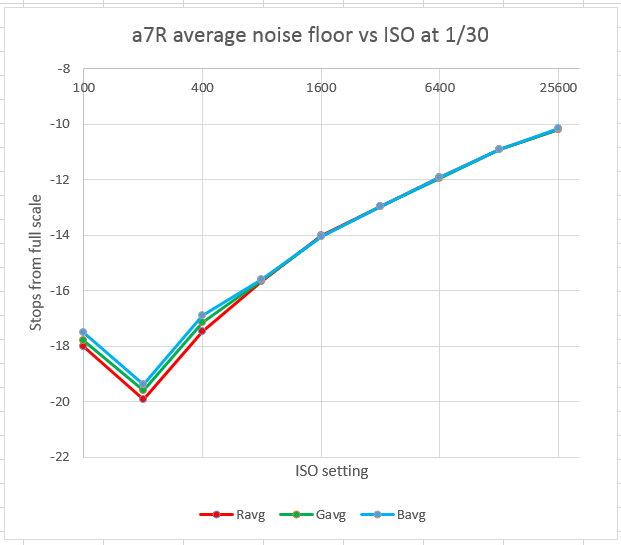The next step is to look at the way the noise floor varies with ISO settings. I used 1/30 of a second for this test, made 16 exposures for each data point, and the results were surprising.
Here’s the average value of the noise floor in the central 90% of the image vs ISO:
And here’s the standard deviation of the noise floor:
What’s going on at ISO 100? There’s more noise there than at ISO 200, which is just weird. I doubled checked the results, and even made a second set of exposures, and that’s what the camera is doing. If you look at the worst-case results, they make sense, but the average doesn’t.
Alternately, you could ask what’s going on at ISO 200, since those points appear to be too low. Remember, if all the read noise is ahead of the ADC, the curves will be straight lines.
Note that the average noise floor at ISO 100 at 1/30 second is substantially higher than the average noise floor at ISO 100 at ¼ second, as measured in the previous post.
I have had long exposure noise reduction turned off all along, so that’s not it.
I’m going to have to do a test of how noise floor varies with shutter speed.


[…] you’re interested in the dark noise of the sensor, go here, here, and […]